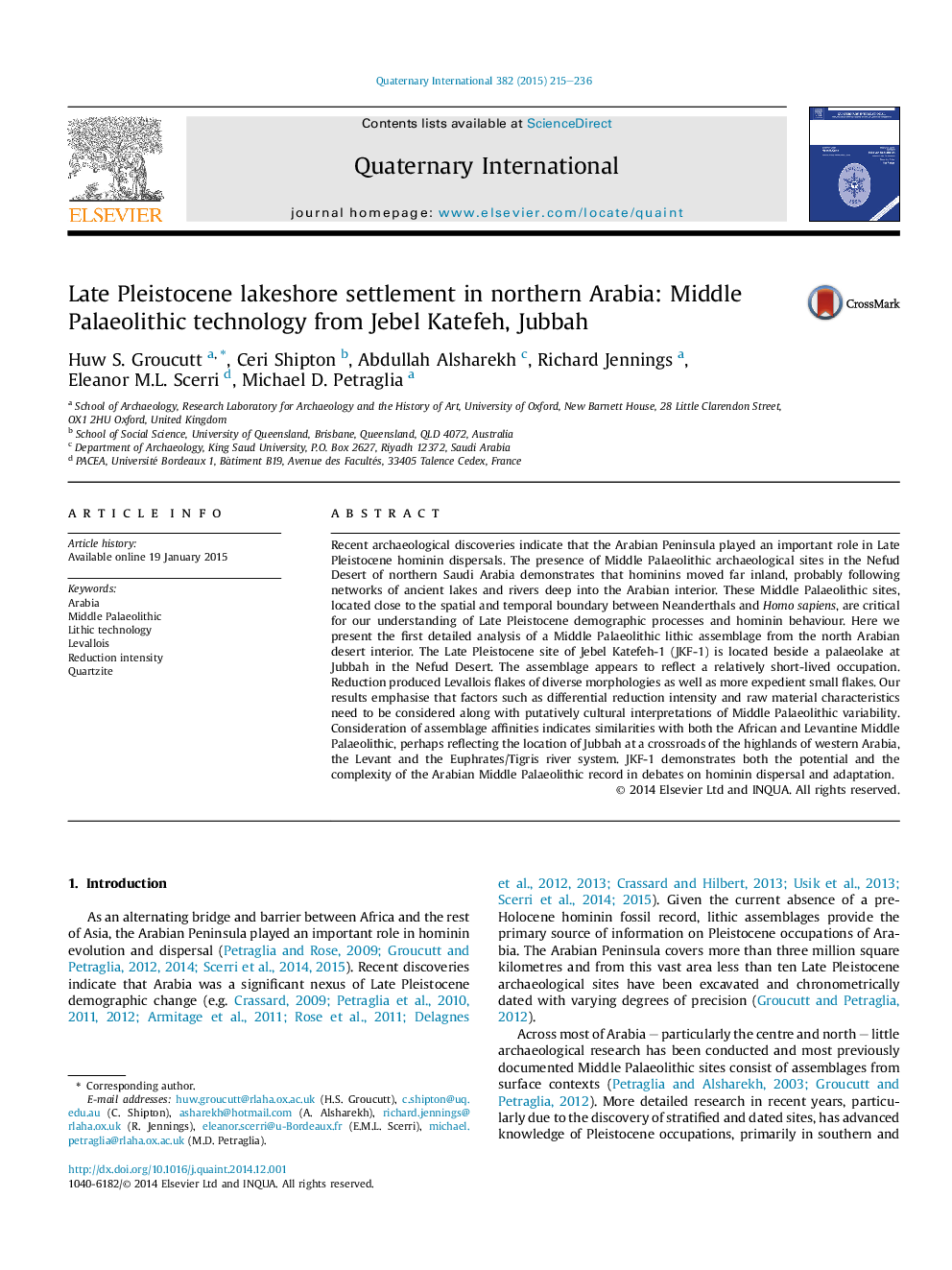| Article ID | Journal | Published Year | Pages | File Type |
|---|---|---|---|---|
| 1040634 | Quaternary International | 2015 | 22 Pages |
Recent archaeological discoveries indicate that the Arabian Peninsula played an important role in Late Pleistocene hominin dispersals. The presence of Middle Palaeolithic archaeological sites in the Nefud Desert of northern Saudi Arabia demonstrates that hominins moved far inland, probably following networks of ancient lakes and rivers deep into the Arabian interior. These Middle Palaeolithic sites, located close to the spatial and temporal boundary between Neanderthals and Homo sapiens, are critical for our understanding of Late Pleistocene demographic processes and hominin behaviour. Here we present the first detailed analysis of a Middle Palaeolithic lithic assemblage from the north Arabian desert interior. The Late Pleistocene site of Jebel Katefeh-1 (JKF-1) is located beside a palaeolake at Jubbah in the Nefud Desert. The assemblage appears to reflect a relatively short-lived occupation. Reduction produced Levallois flakes of diverse morphologies as well as more expedient small flakes. Our results emphasise that factors such as differential reduction intensity and raw material characteristics need to be considered along with putatively cultural interpretations of Middle Palaeolithic variability. Consideration of assemblage affinities indicates similarities with both the African and Levantine Middle Palaeolithic, perhaps reflecting the location of Jubbah at a crossroads of the highlands of western Arabia, the Levant and the Euphrates/Tigris river system. JKF-1 demonstrates both the potential and the complexity of the Arabian Middle Palaeolithic record in debates on hominin dispersal and adaptation.
